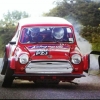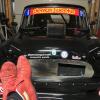Afternoon Guys, I've been doing some research and wanted to get some feedback.
I've been running negative camber bottom arms on all my mini's for years and never had any issues with the top arms. However I recently came across an old Abingdon ST manual for the 1275GT & Cooper S. There is a section in this that states that a metal plate needs to be added to the underside of the top arms:

I also note that Mini Spares makes reference to this on a number of their Negative Camber products (http://www.minispare...px|Back to shop) where they claim this is to stop undue strain on the drive shafts.
Given the fact that the forum is not full of people claiming broken drive shafts, can somebody please help me understand how changing the camber can affect the driveshafts - after all this is what CV joins are for - and how adding some metal to the top arms fixes it?
Edited by Curley, 28 November 2014 - 06:44 PM.




















